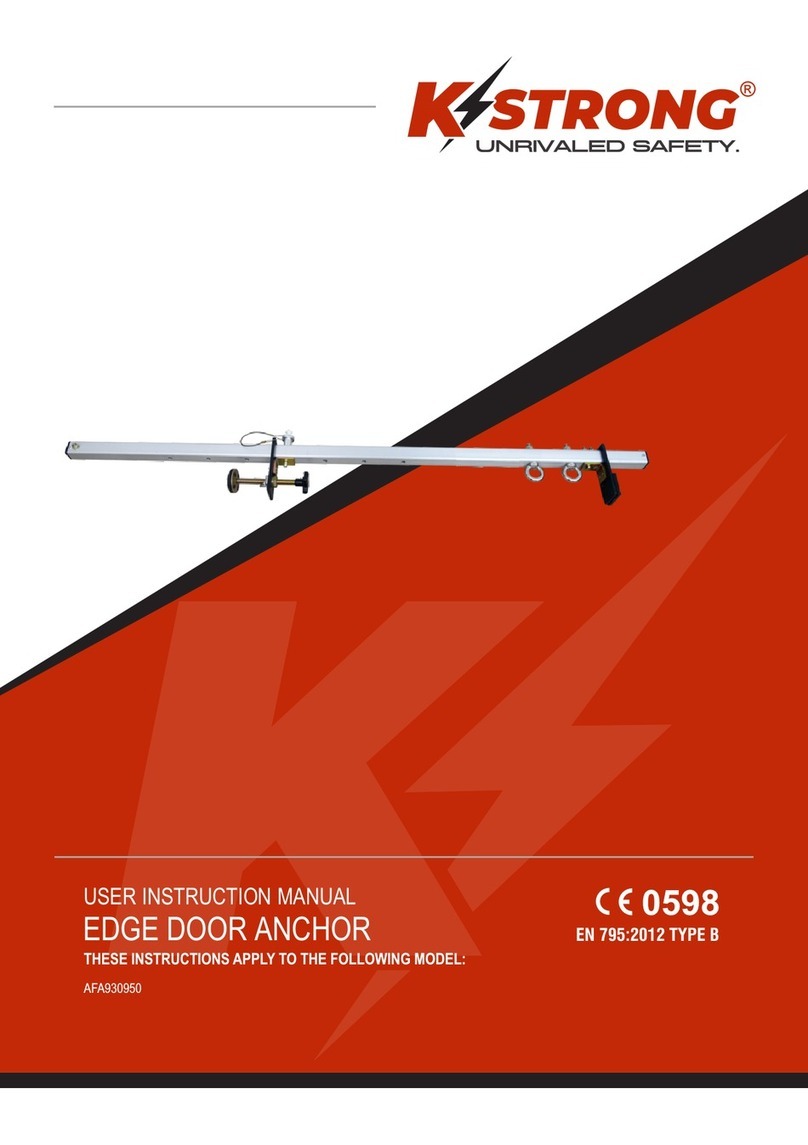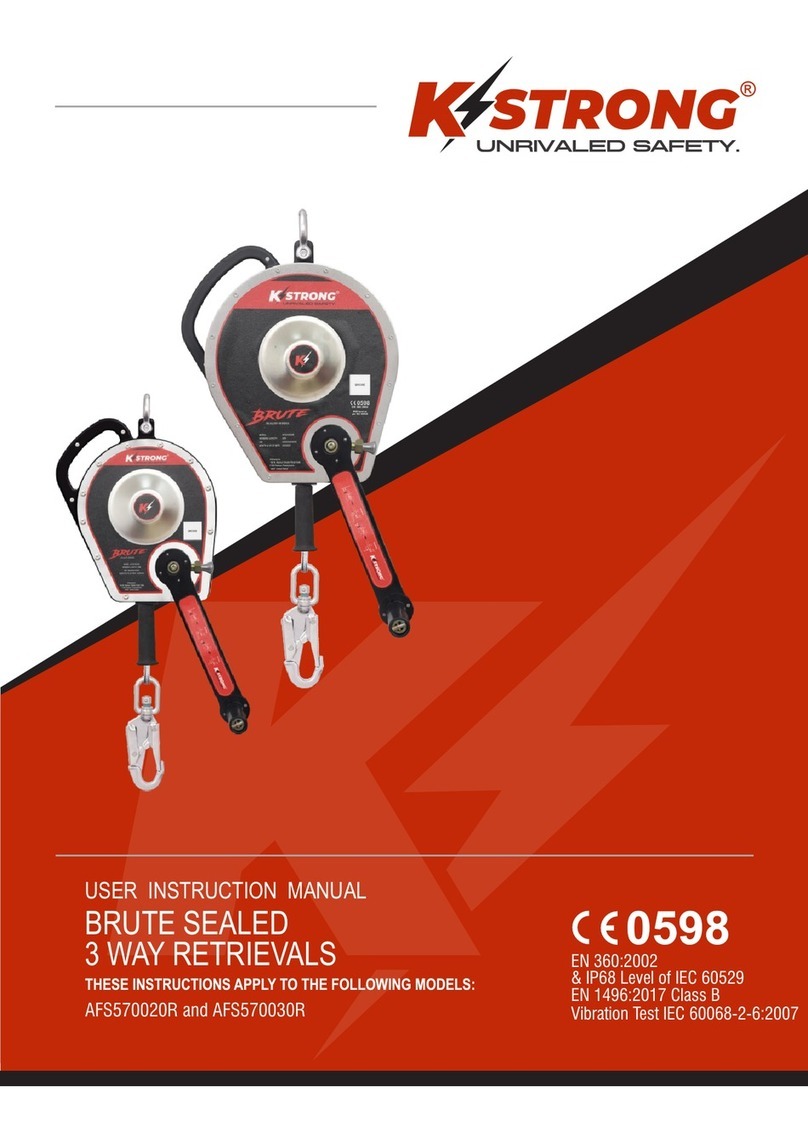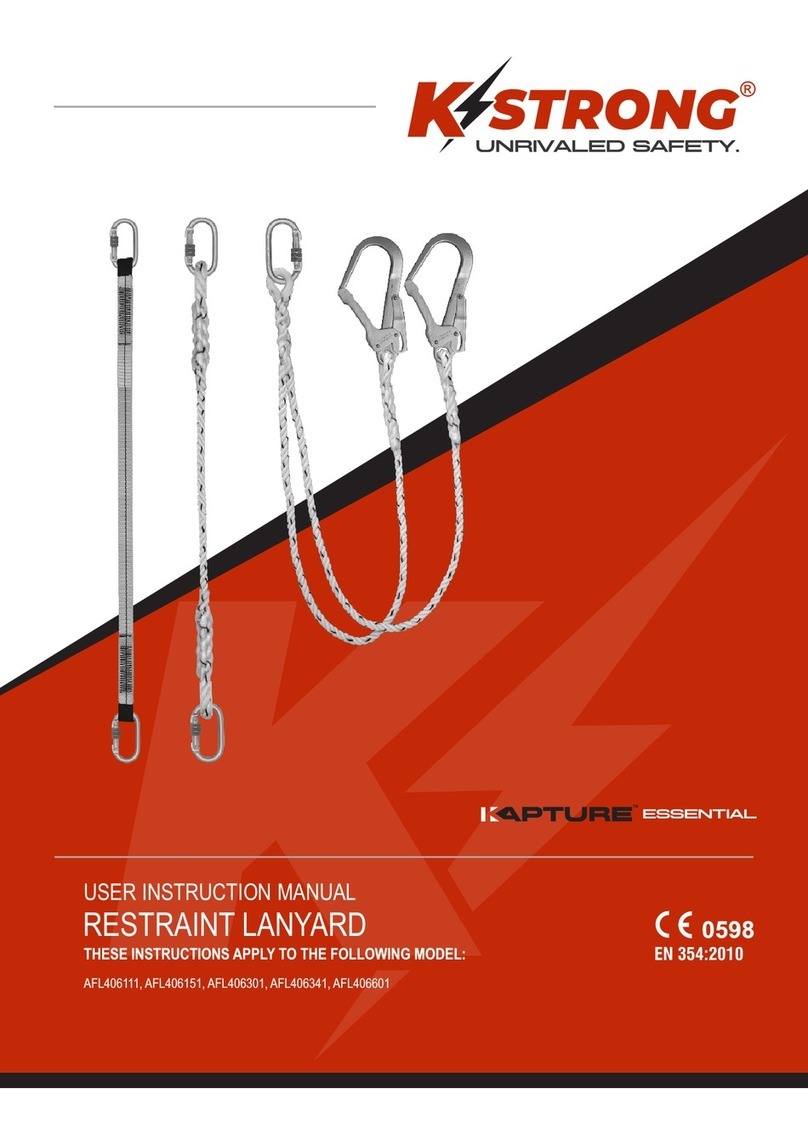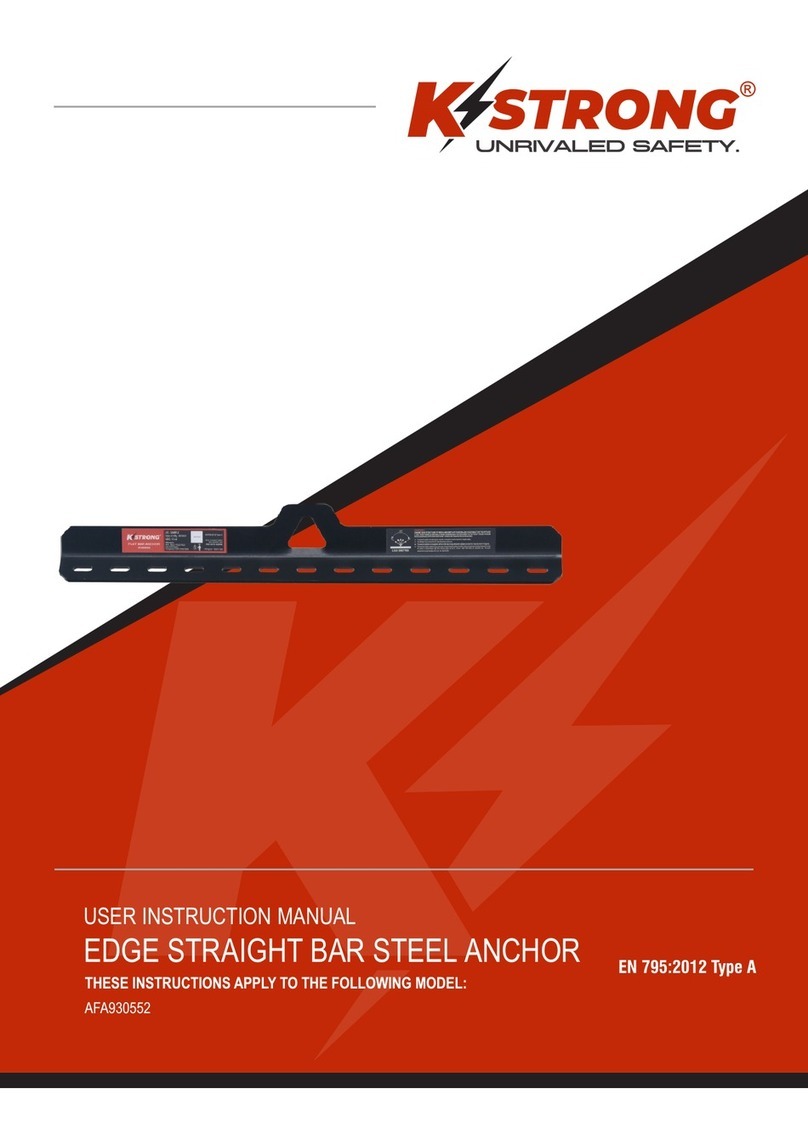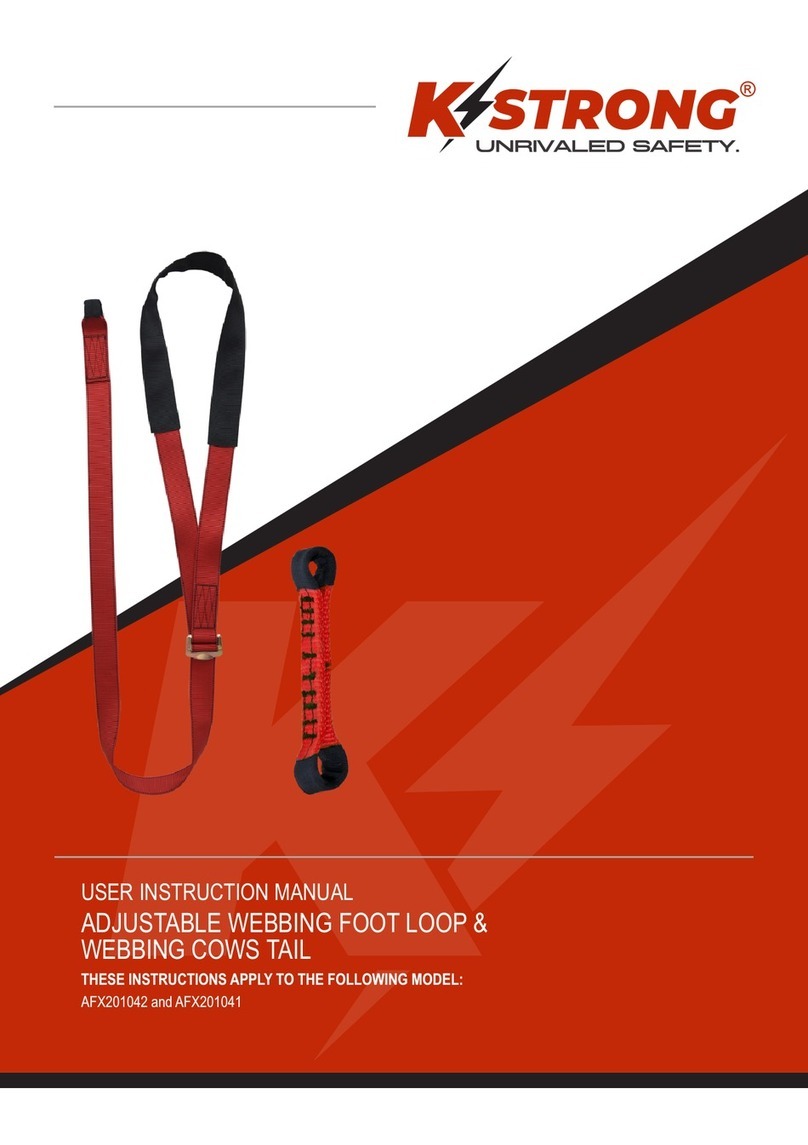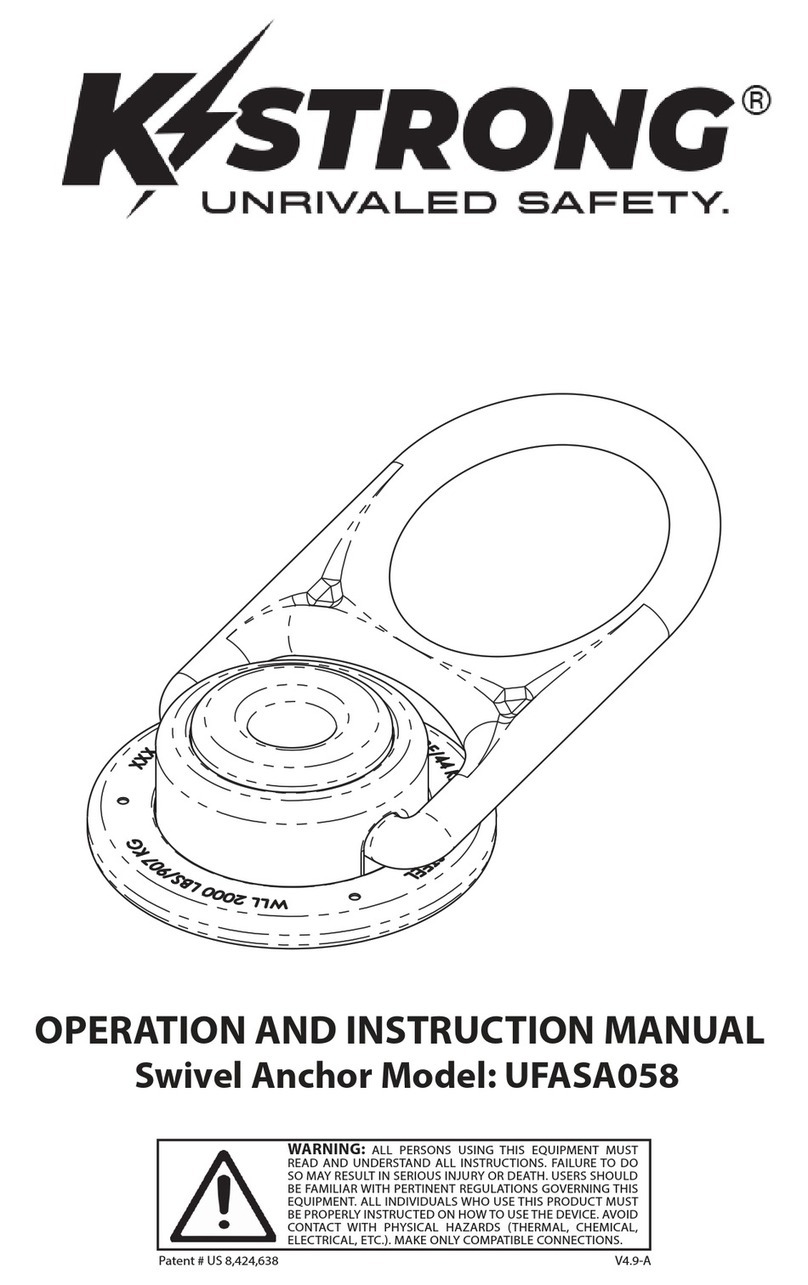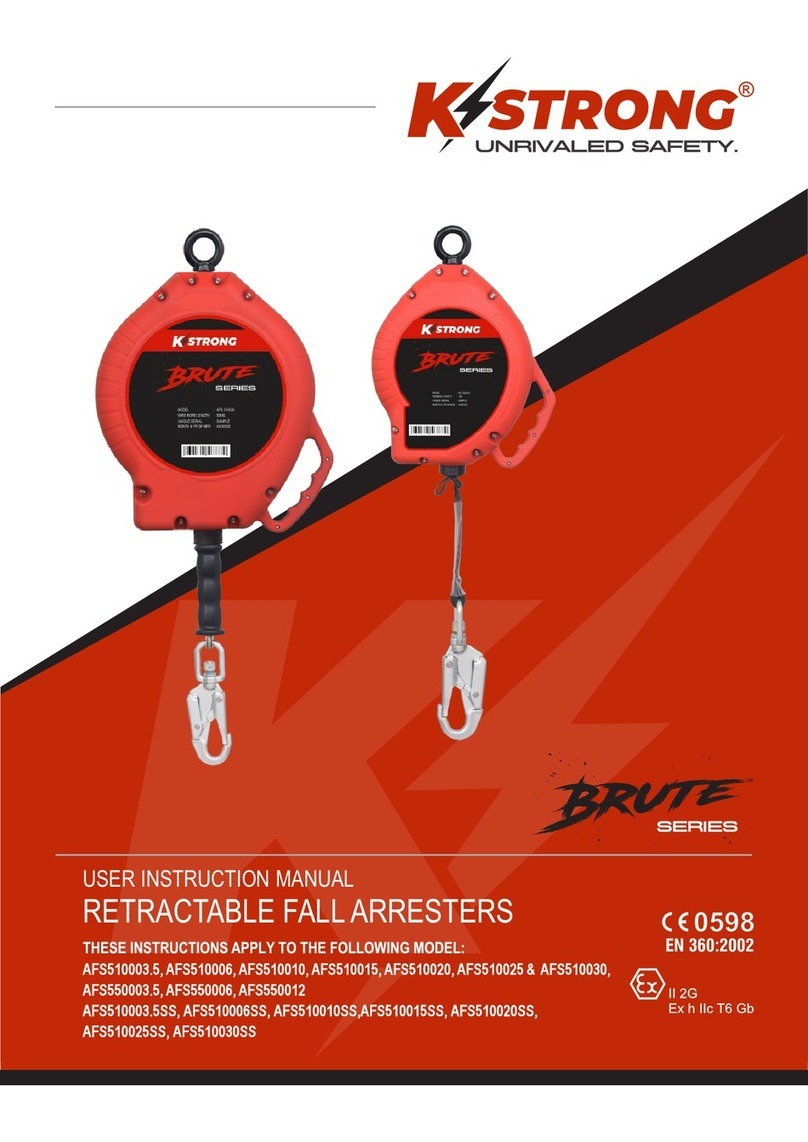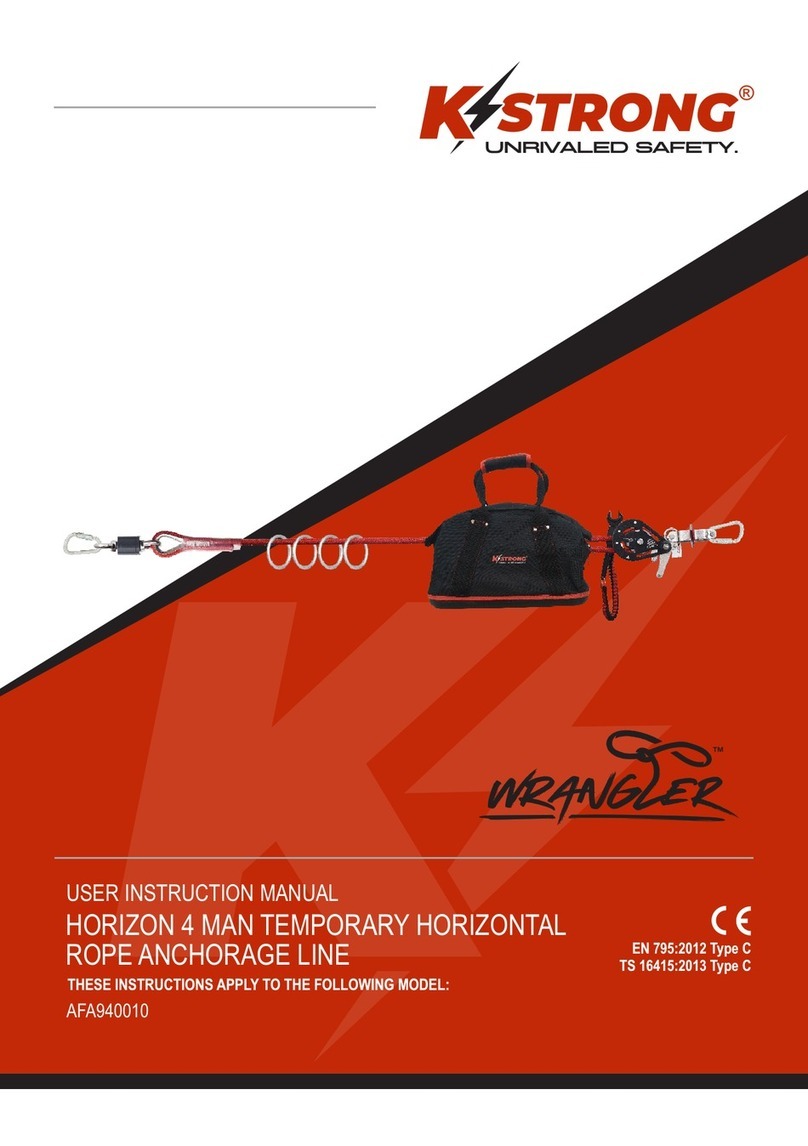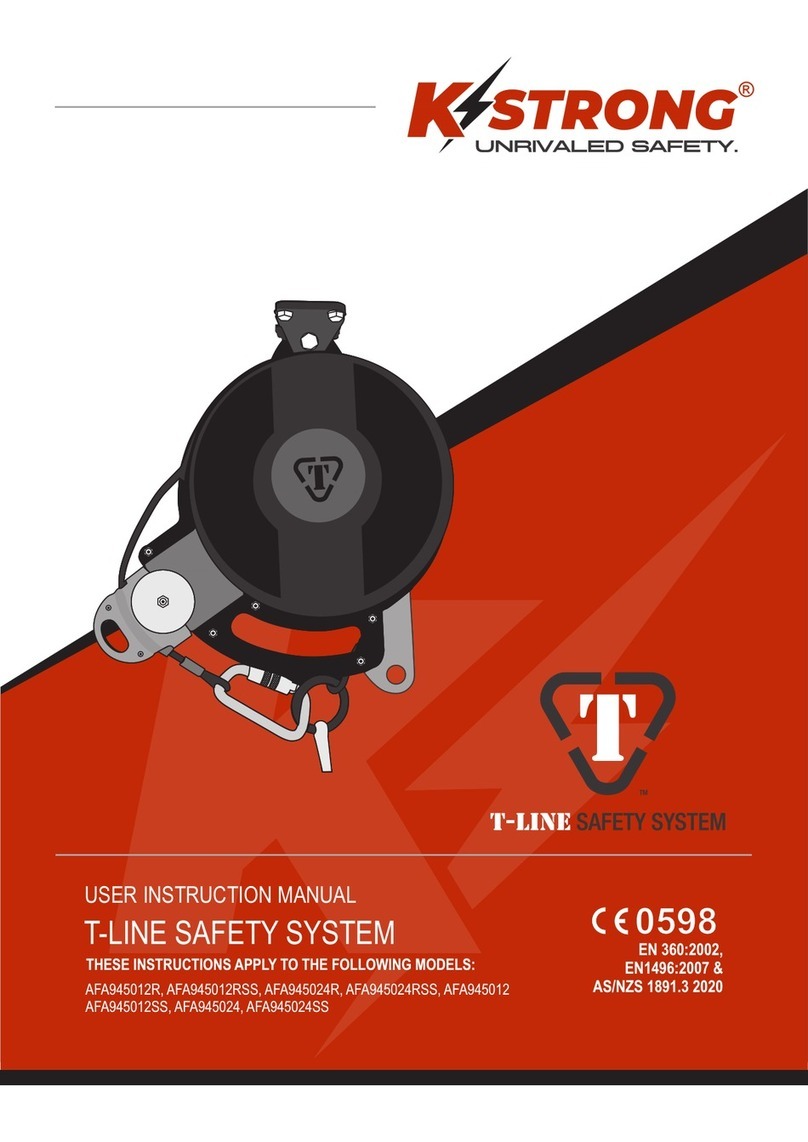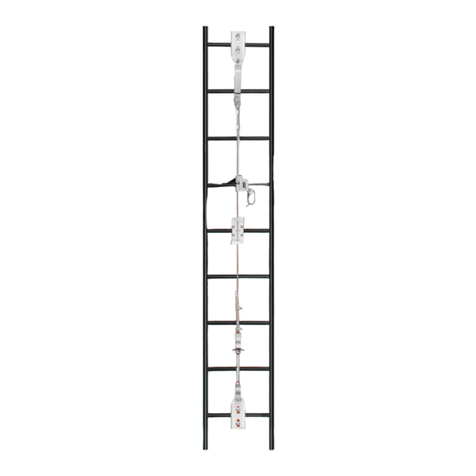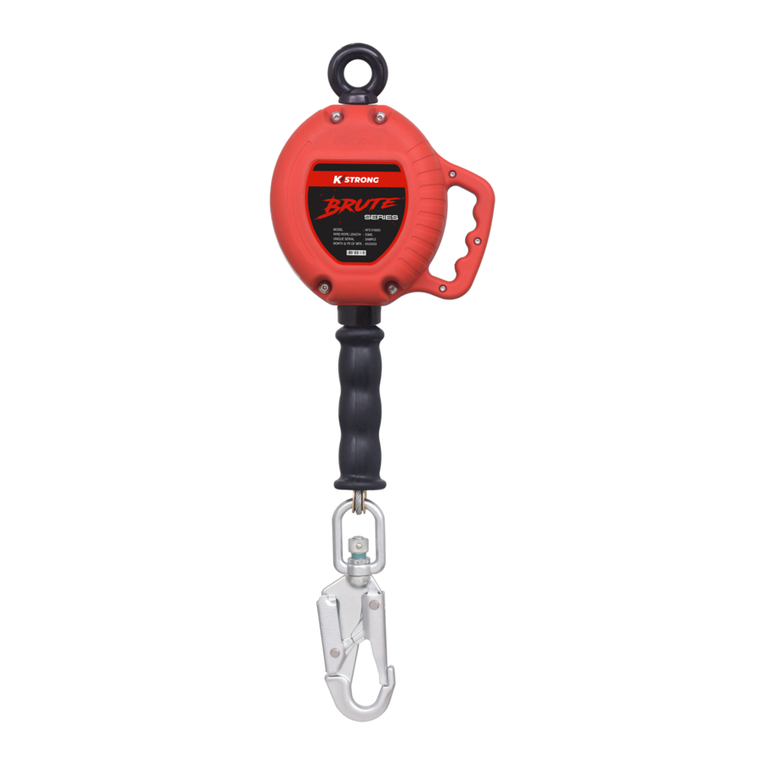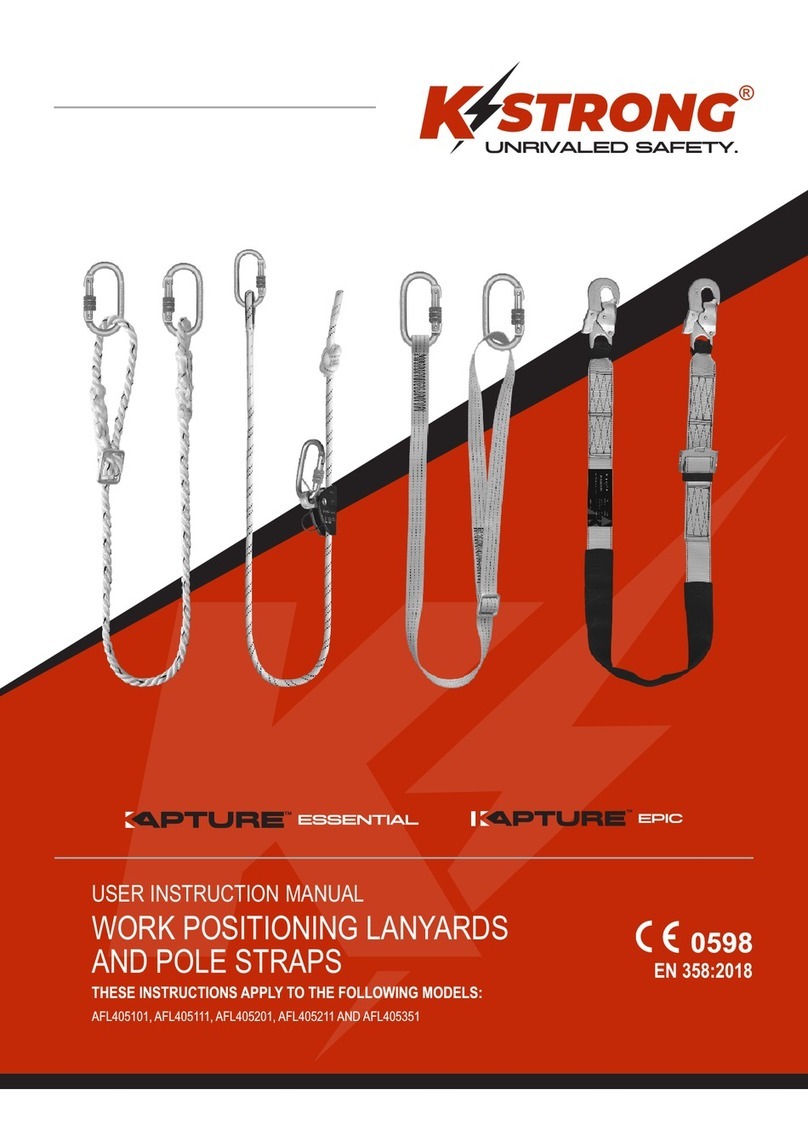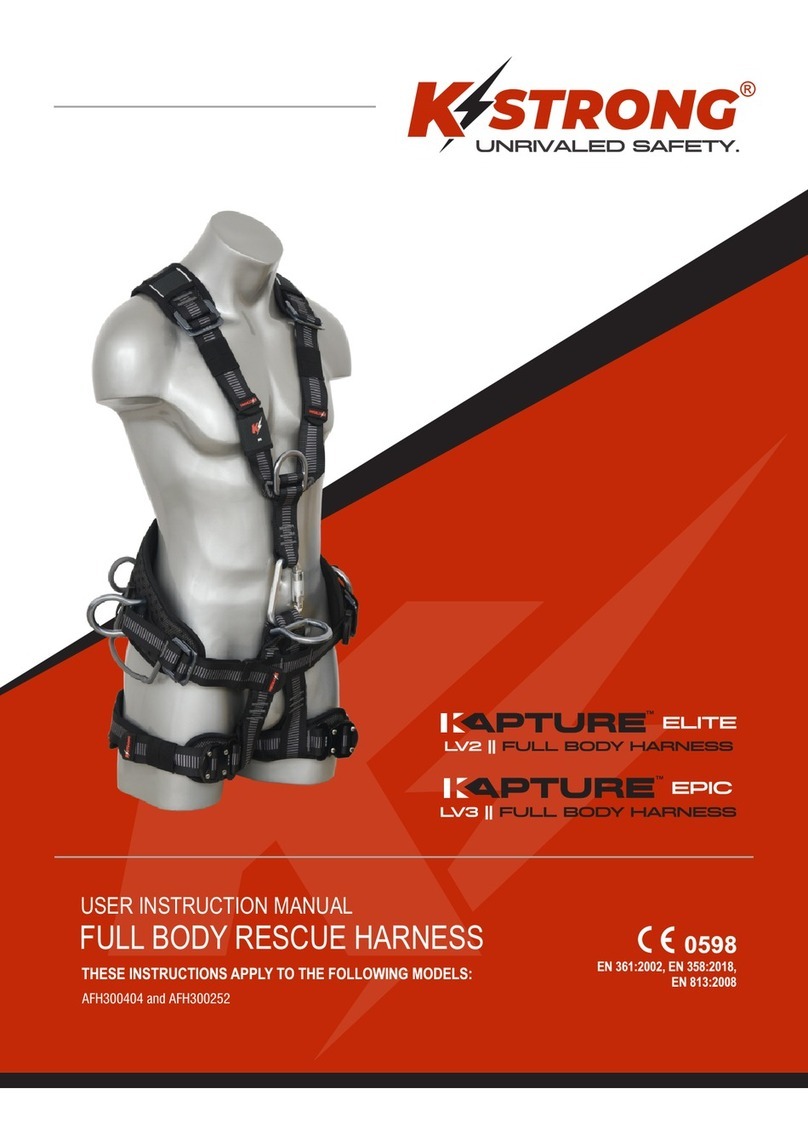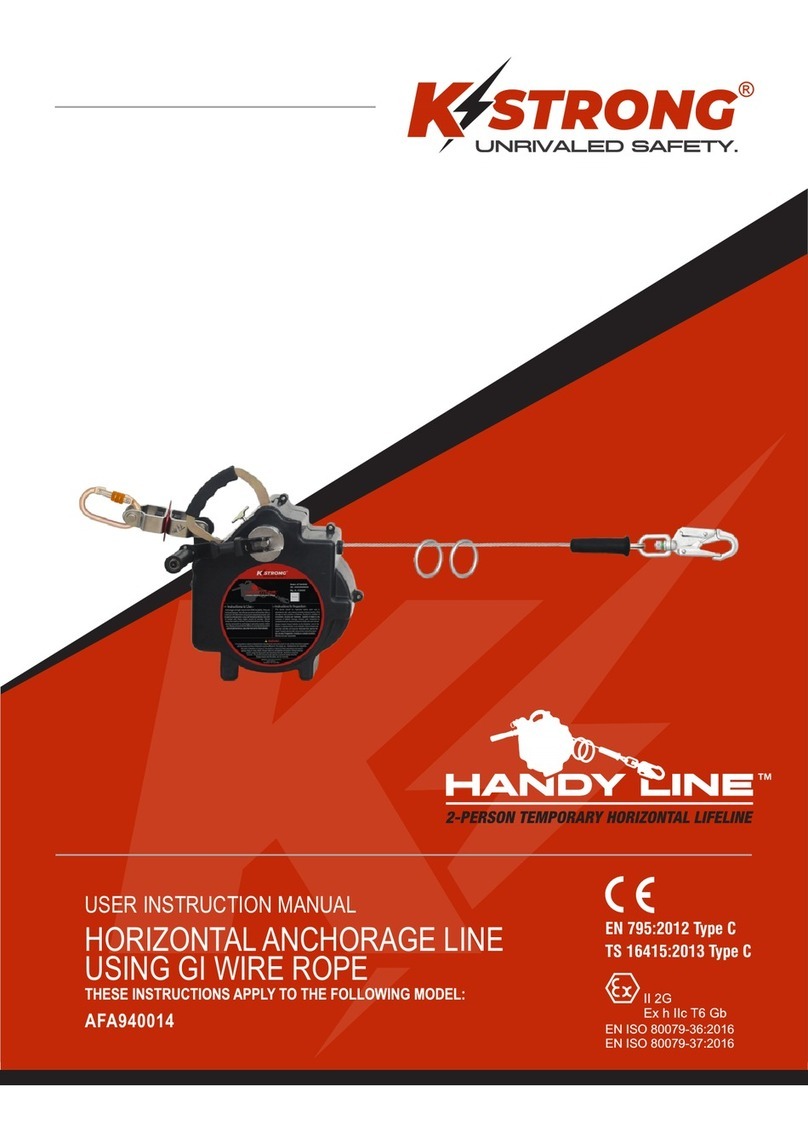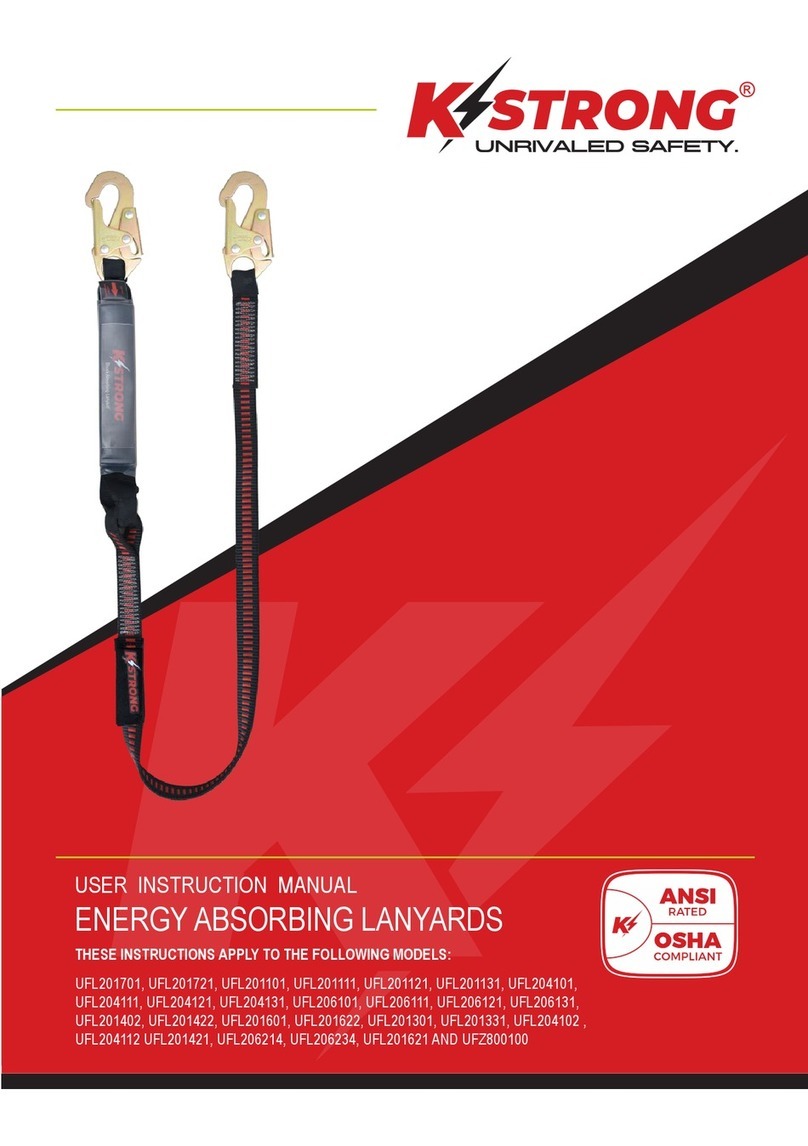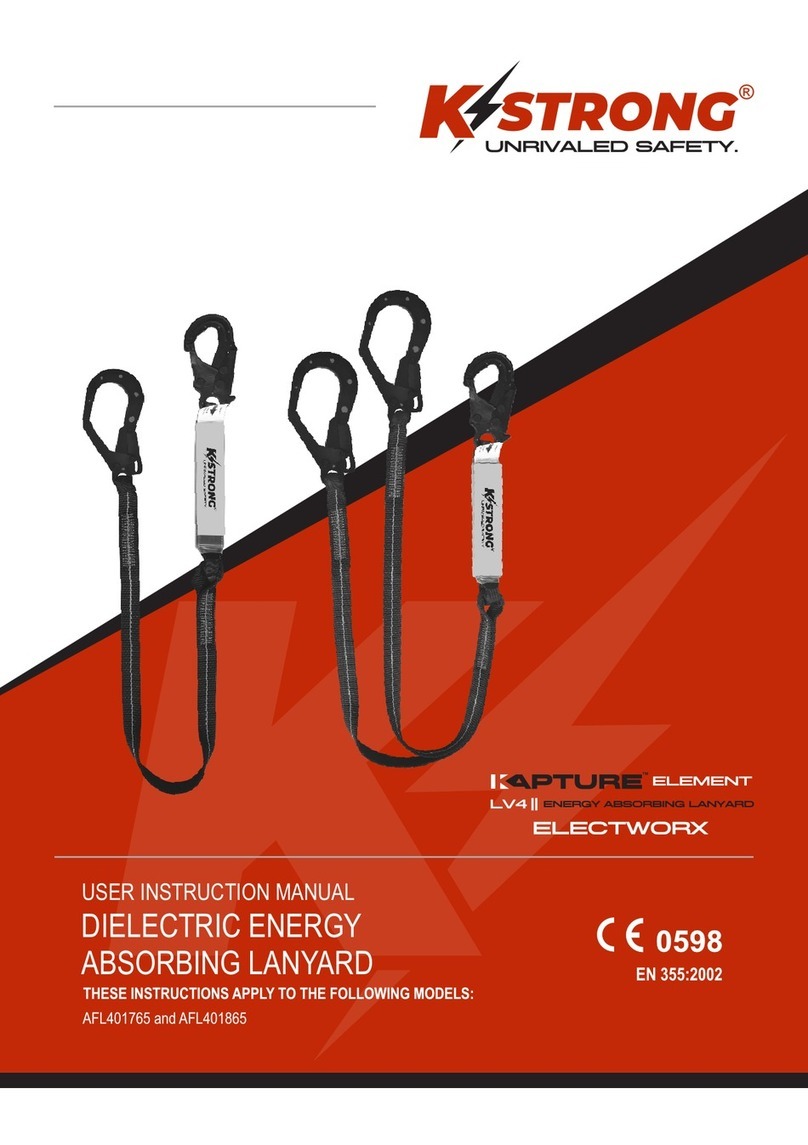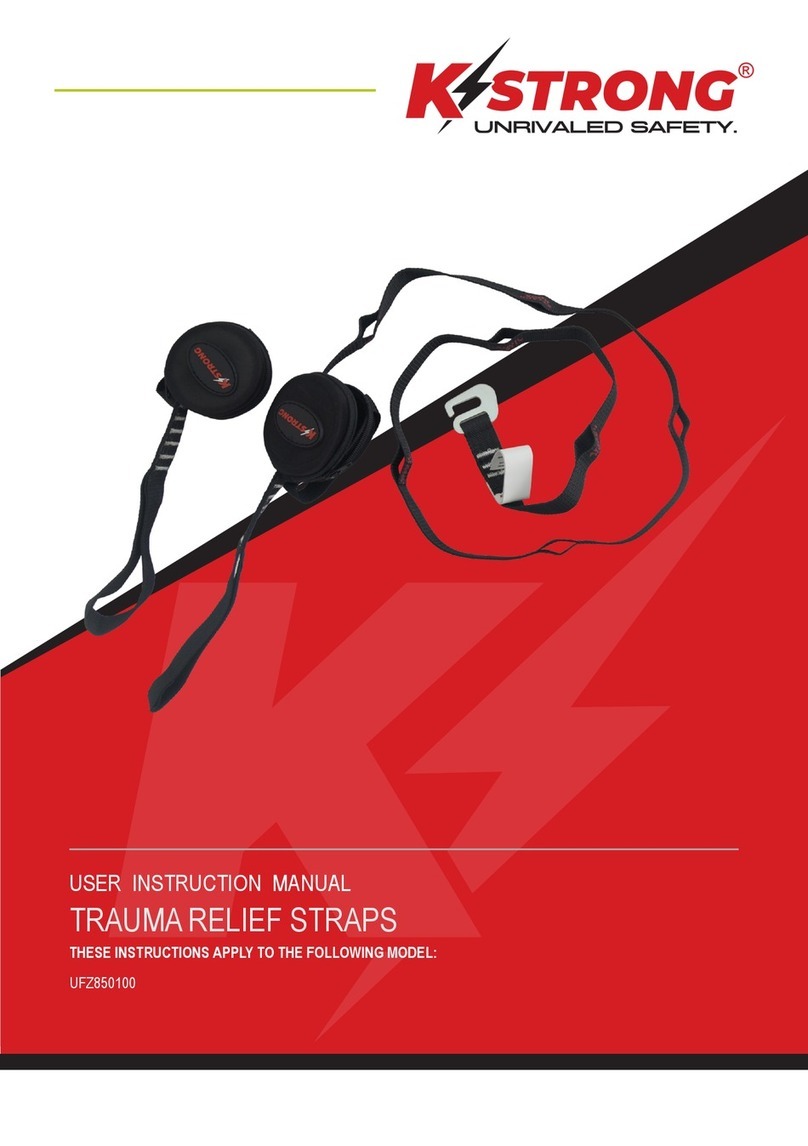
4
5. PRE-USE CHECK:
STEP 1: Inspect all screws, bolts and nuts. Ensure they are securely attached and tight. Check to see if any bolts, nuts or other parts are
missing, or have been substituted or altered in any way. Inspect covers, housings, guards, etc. Ensure they are free of cracks,
dents, or other damage.
STEP 2: Inspect metal components for rust or corrosion that may affect their strength or operation.
STEP 3: Inspect the wire rope for rust, corrosion, broken wires, or other obvious faults. Inspect the synthetic rope for burnt, broken threads,
or other obvious faults. Inspect all karabiners and connectors securing the HLL assembly to ensure they are present and properly
installed. Inspect the sleeves at the end of the lifeline for damage such as cracks, dents or distortion.
STEP 4: Inspect the impact indicator at the end of the lifeline. If the pin is broken, the system has been exposed to an impact force. The
system must not be used if the indicator is broken.
STEP 5: Pull sharply on the lifeline close to the device end to ensure that the lifeline is secured.
STEP 6: Repeat step 4 of this manual to ensure that the lifeline is under the correct tension. If not necessary, do not apply any extra-
tension on the lifeline during this operation, just make sure that the crank handle “clicks”.
STEP 7: Inspect system labels. The labels must be present and fully legible. Replace labels if missing or illegible.
IMPORTANT: If this equipment is subjected to the forces of a fall arrest, it must be removed from service and destroyed.
• If inspection reveals an unsafe or defective condition, remove unit from service.
USER EQUIPMENT: Inspect harnesses and energy absorbing lanyards or SRL’s used with the HLL system according to manufacturer’s
instructions.
• This equipment must be inspected according to steps listed in this manual by a competent person, other than the user, at least annually.
Record the results of each inspection in the equipment record table.
IMPORTANT: Extreme working conditions (harsh environments, prolonged use, etc.) may require increasing the frequency of inspections.
• If inspection reveals an unsafe or defective condition, remove the HLL from service and contact an authorized service center for repair.
6. SYSTEM REQUIREMENTS:
• Compatibility of Connectors: KStrong equipment is designed for use with KStrong approved components and subsystems only.
Substitutions or replacements made with non-approved components or subsystems may jeopardize compatibility of equipment and
may effect the safety and reliability of the complete system.
• Compatibility: Connectors are considered to be compatible with connecting elements when they have been designed to work
together in such a way that their sizes and shapes do not cause their gate mechanisms to inadvertently open regardless of how
they become oriented. Connectors (Hooks, Karabiners, and D-rings) must be capable of supporting at least 5,000 lbs. (22.2 kN).
Connectors must be compatible with the anchorage or other system components. Do not use equipment that is not compatible.
Non-compatible connectors may unintentionally disengage. Connectors must be compatible in size, shape, and strength.
• Connections: Only use self-locking snap hooks and karabiners with this equipment. Only use connectors that are suitable to each
application. Ensure all connections are compatible in size, shape and strength. Do not use equipment that is not compatible. Ensure
all connectors are fully closed and locked.
KStrong connectors (Snap Hooks and Karabiners) are designed to be used only as specified in each product’s user instructions.
NOTE: Large throat-opening snap hooks should not be connected to standard size D-rings or similar objects which will result in a load on the
gate if the hook or D-ring twists or rotates. Large throat snap hooks are designed for use on fixed structural elements such as rebar or
cross members that are not shaped in a way that can capture the gate of the hook.
• In a false engagement, where features that protrude from the snap hook or carabiner catch on the anchor, and without visual
confirmation seems to be fully engaged to the anchor point.
• To each other.
• Directly to webbing or rope lanyard or tie-back (unless the manufacturer’s instructions for both the lanyard and connector
specifically allows such a connection).
• To any object which is shaped or dimensioned such that the snap hook or karabiners will not close and lock, or that roll-out could
occur.
